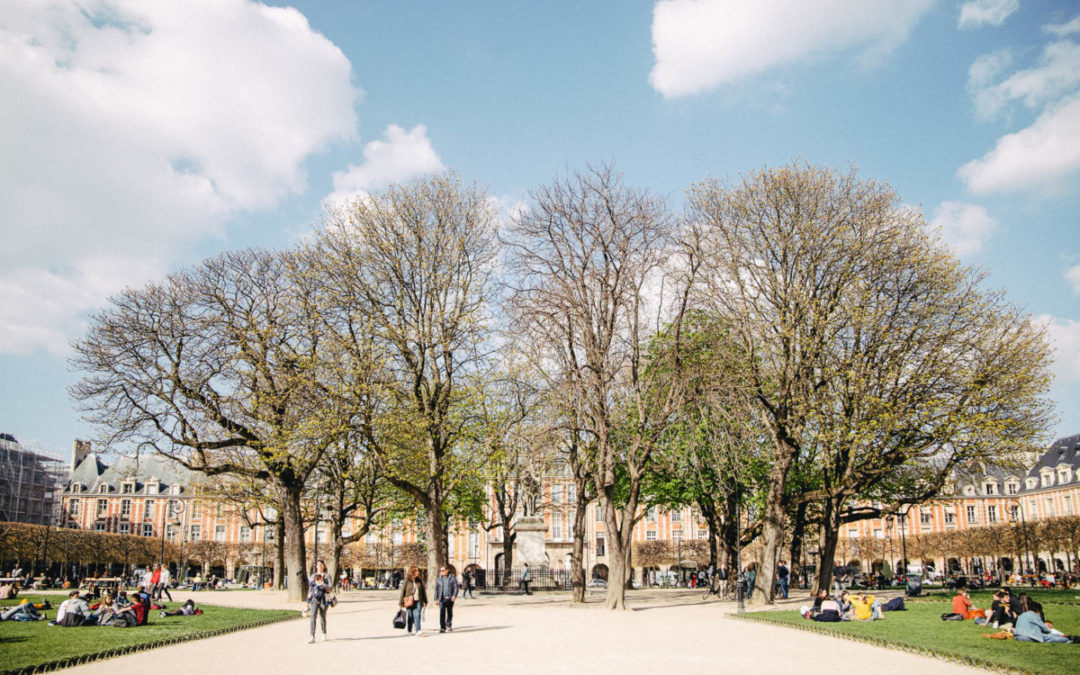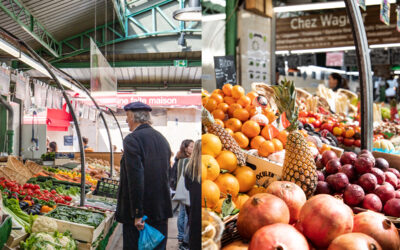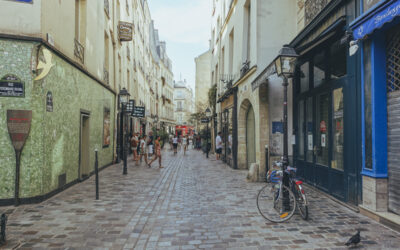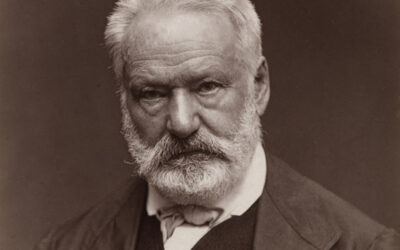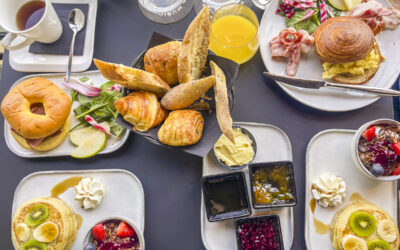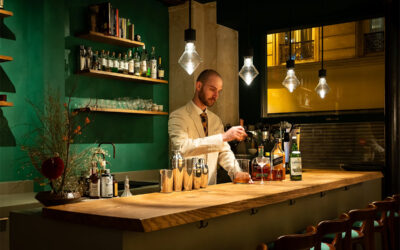On April 5, 6 and 7, 1612, hundreds of Parisians gathered in the Marais to attend the sumptuous festivities given on the occasion of the double marriage of the young Louis XIII to the Infanta of Spain, future Anne of Austria , and Madame Elisabeth, sister of the king, with the Infante Philippe IV.
The setting in which these celebrations take place is grandiose: it is the brand new “Place Royale” (current Place des Vosges) which is being inaugurated, after several years of work.
It all began in 1605. Henri IV, the first Bourbon king, decided to build a silk factory in place of a horse market and the ruins of the old Palais des Tournelles.
This “manufacture”, like others created then by the crown, aims to free France from foreign imports which flooded in the previous century, under the “Renaissance”.
A first project is launched: to the north of the current square, twelve pavilions must be built to accommodate the factory but also its workers.
For the occasion, the king went to seek the know-how of Italian silk workers who therefore set up here, along a new street (today the axis rue de l'Echarpe / rue du Pas-de-la -Mule), itself lined with a covered gallery housing shops and workshops.
In 1607, the original project was modified. Henri IV wishes to provide his capital with a new square and the Marais with a new “epicenter” where unity and symmetry must dominate.
A vast quadrilateral was then defined and, on its four sides, thirty-six identical pavilions were erected – except two, more imposing: the “pavilion of the king”, opening onto the rue de Birague and the “pavilion of the queen”, which faces it - pavilions, it is said then, which "have no place in all of Christendom which can be compared to them".
And the fact is that at the time, no other square in Europe could compete in proportions and appearance with the “Place Royale” of Henri IV: the harmonious facades were built of bricks and stone, the high roofs are made of slate; the idea of the covered and shopping gallery of the factory is also taken up, this time around the entire perimeter of the square.
We can thus, something extremely rare, walk or "go shopping" sheltered from the rain and without walking in the mud...
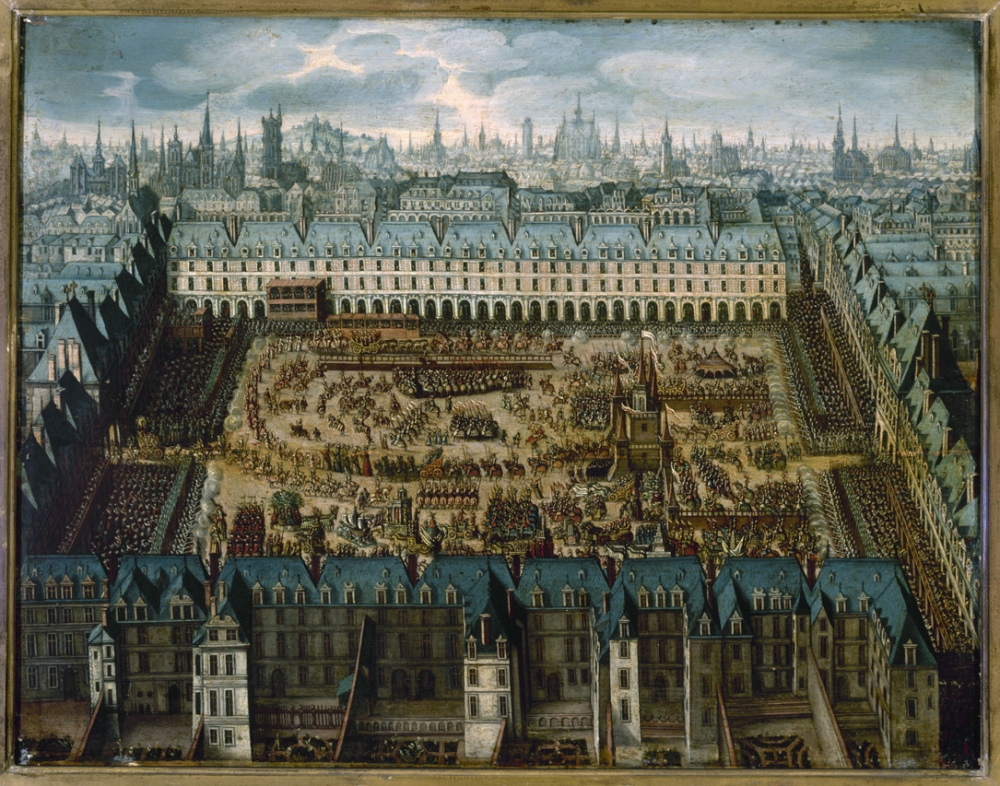
The “Roman of the Knights of Glory”, a large carousel given at Place Royale from April 5 to 7, 1612. On the occasion of the marriage of Louis XIII to Anne of Austria.
Anonymous, 1612th century, Musée Carnavalet – History of Paris, Circa XNUMX, Oil on wood.
The inauguration of 1612 is the opportunity to discover to the people, to foreign ambassadors, to the courts of Europe, the magnificence of "the Place" as they say then, as if there were now only one. in Paris which is worth the trip.
Henry IV is unfortunately no longer there to attend the celebrations. Assassinated by Ravaillac, he died in 1610 and it was the regent Marie de Médicis and the young Louis XIII who received the ovations of the spectators. On the arrival of the queen and the sovereign, the cannons of the Bastille thunder.
The royal procession, endless and colorful, enters via rue de Birague and parades across the square: the newlyweds are acclaimed; from the windows of the pavilions and even from the roofs where some have settled, we greet the great personages of the State, we admire their clothes of silk, gold and precious stones, we applaud the “carousel” of the riders, the soldiers and musketeers.
Transformed into a gigantic theater stage, the square is lined with platforms, hung with velvet in places and decorated with flags. Ephemeral constructions were built here and there, as well as wine fountains.
For three days, court and people rub shoulders, have fun, laugh. Cavalcades, fanfares, tournaments, parades follow one another. In the evening, fireworks ignite the Parisian sky.
The party had barely passed, the place immediately became “fashionable” (to the point that Corneille even produced a play from it: “La Place Royale”!) It remained so throughout the XNUMXth century. Behind the facades, the great families of the kingdom have built sumptuous mansions.
Nobles, financiers, ministers, men of letters are settled here, or, failing that, nearby, in the neighboring streets. These are the heydays of the Marais, punctuated by other memorable festivals, such as that organized in 1656 to welcome Queen Christina of Sweden or that of 1660, celebrating the arrival of Marie-Thérèse in Paris.
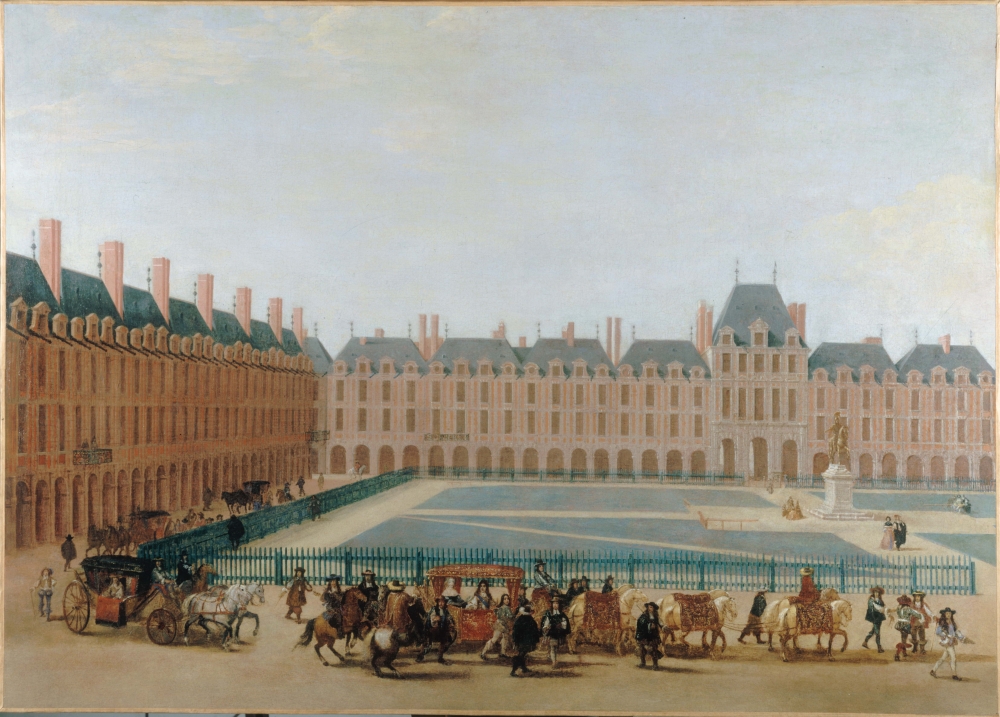
Anonymous, Musée Carnavalet – History of Paris, Circa 1655, Oil on canvas.
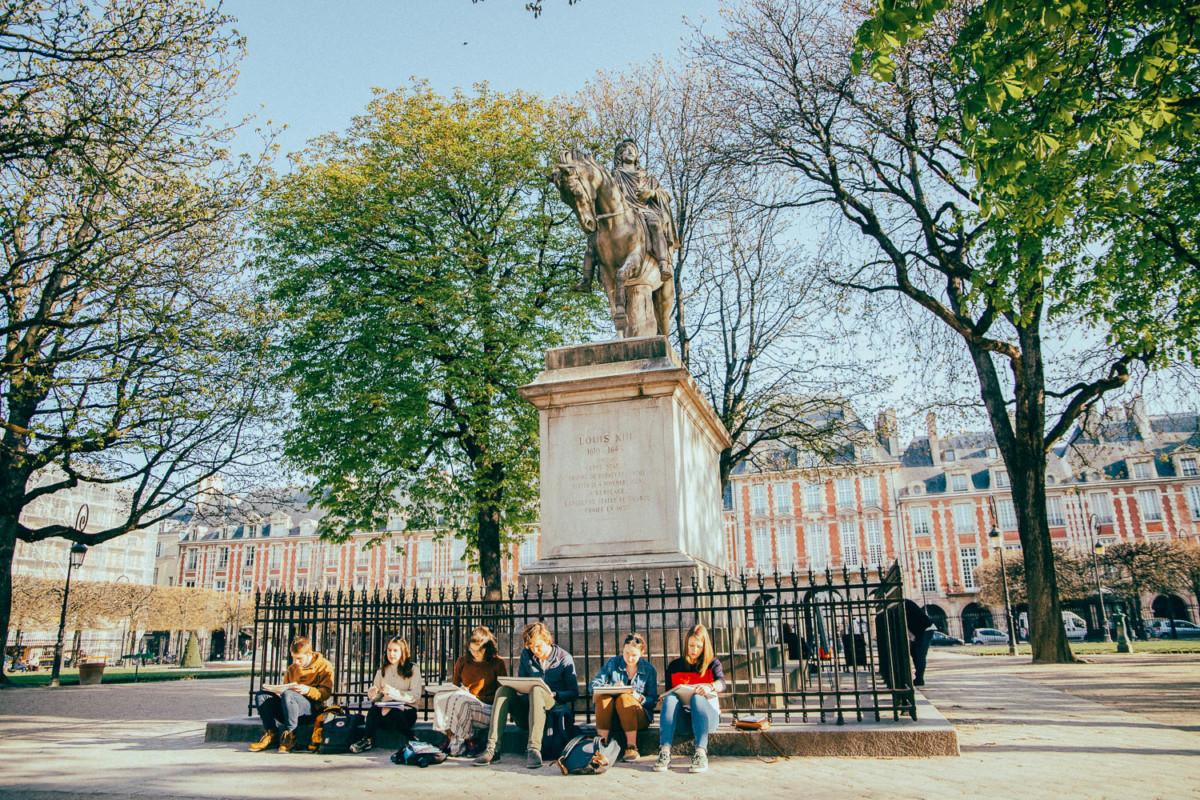
In the 1789th century, things changed. The decline has begun. The aristocracy preferred to live in new neighborhoods like the Faubourg Saint-Honoré or, on the left bank, Saint-Germain-des-Prés. Only a few old families remained, soon swept away by the events of XNUMX.
Under the Revolution, the “ci-devant” deserted the place and emigrated; their hotels are confiscated. On the esplanade, national guards and soldiers replace the walkers.
The place obviously also changes its name: from now on, the square is called “Indivisibility [of the Republic]”. It remained so until the end of the century, before becoming “Vosges” in 1800, through Bonaparte.
That year, in fact, the “1st Consul” announced that he would instead give the name of the French department which was the first to have paid its taxes to the State. The Vosges are distinguished by their zeal: the “place des Vosges” is thus decreed.
“Royal” again under the Restoration and, more curiously, under the Second Empire, it will however resume its Napoleonic name with the Third Republic. It is under this name that locals and tourists have known it ever since. According to the latest news, there are no plans for her to change her name again…
FOR PASSIONATES OFUS
The Enfants Rouges market, everyone loves it
Restaurants, merchants, a photo store, a bookstore... This is how the Red Children's Market presents itself, unique in its kind in the Marais and its capital because it is the only one to offer such a varied and varied range of restaurants. qualitative.
The Marais Jewish quarter in Paris
From the 13th century, the Marais was home to a Jewish community which remained there until its expulsion in the 14th century. Fleeing poverty and persecution, Jews from Eastern countries and those from Alsace settled there in the 19th century. Around rue des rosiers and Place Saint-Paul renamed Pletz…
Victor Hugo, the writer with a thousand talents
Born in 1802, Victor Hugo became a social writer, a playwright, a poet, a novelist and a romantic designer. Nicknamed the man-ocean then the man-century, he is a political figure and a committed intellectual. He found success with Notre-Dame-de-Paris in 1831 and with Les Misérables in 1862.
NOW ON THE MOOD MARSH
Millet, from the mountains to the Marais
From the top of this outdoor and technical clothing store, a hundred years of family history gaze down upon you. Created in 1921 in Chamonix, the Millet brand is still managed by the family of the same name. It is therefore a bit of French heritage and know-how that arrives from the Alps to settle in the Marais…
Divine brunch at the foot of Notre-Dame
Of course, officially, it is not the Marais. But at Son de la Terre, a barge recently moored at the Montebello quay (5th), the 4th arrondissement is in sight. Moreover, this one is incredible: on one side, it is Notre-Dame flooded with sunlight; on the other, the quays, the book sellers, the walkers, the joggers.
Saka, a cocktail bar like in Tokyo
Here is an address which gives the measure of the transformation of the Marais. And it's enough to silence the grumpy people whose mantra is: “It was better before…” No, everything was not better “before” in the Marais. Besides, there was no American bar like Saka, which cultivates a form of excellence that can only be found in Japan.

